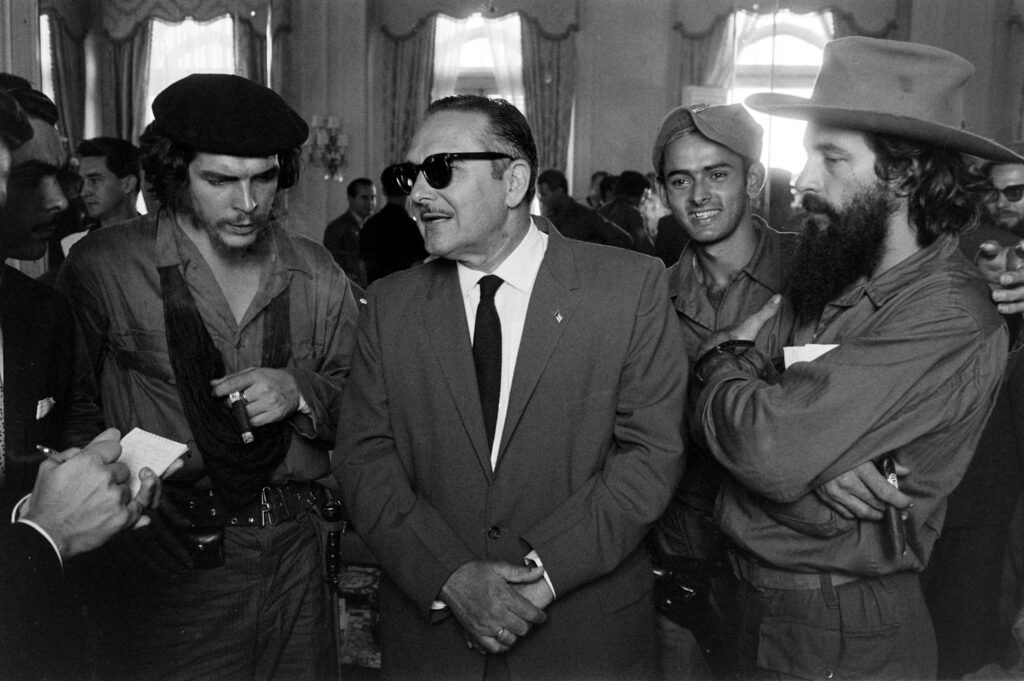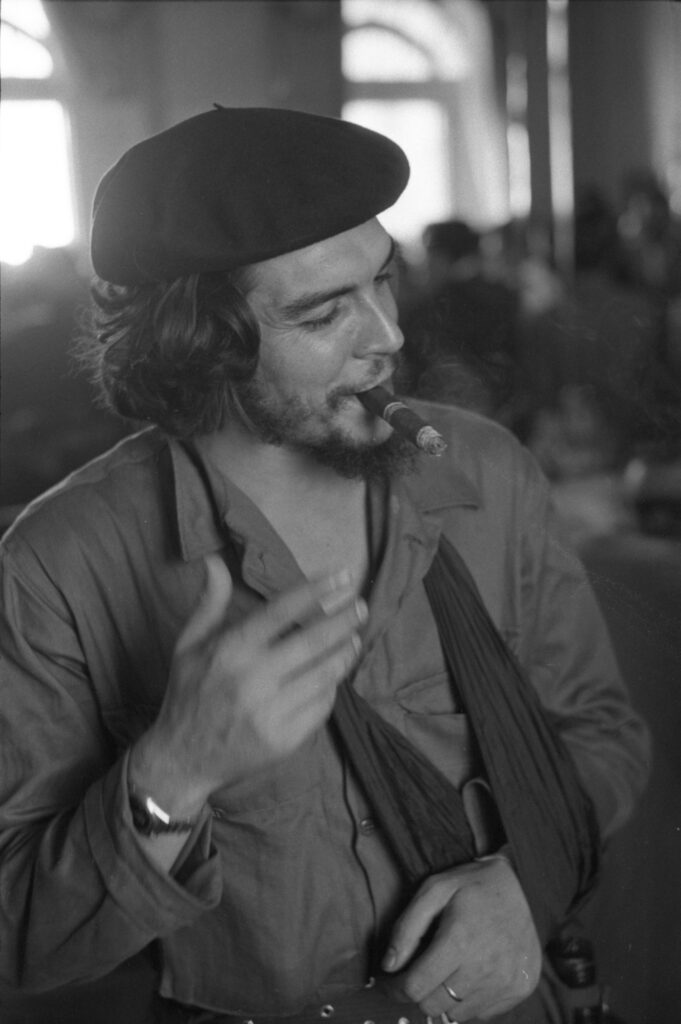Written By: Ben Cosgrove
Ernesto “Che” Guevara, the Argentine Marxist and guerrilla fighter, remains a stubbornly popular figure in the broader culture. The famous portrait of him by Alberto Korda has adorned everything from t-shirts and baseball caps to hagiographic murals and MAD magazine covers. A photo of Guevara taken by LIFE photographer Joe Scherschel remains one of the top sellers in the LIFE print store.
Joe Scherschel shot his Che photo for a story that ran in LIFE in July 1960 titled “Communism’s Take-Over in Castro’s Cuba.” The story recognized Guevara’s key role in the revolution:
“Castro nominated himself the messiah of Latin American underdogs using one instrument his voice. And although his wildly histrionic performances often make him appear a certifiable lunatic, the power of his magnetic appeal cannot be denied. . . . But since he does almost no real work himself, the material power of his regime rests with his chosen aides. Chief among them, and probably the most sinister, are his brother Raúl and the Argentine party-liner Ernest (Che) Guevara.”
That’s an overly simplistic characterization of the post-Batista power structure in Cuba, but there’s no question that, for several years, no other rebel in Havana was closer to Castro, or wielded as much power, as Guevara.
But the complexity of Guevara’s legacy is in many ways far more fascinating, and more telling, than any litany of mere facts about his life.
For example, for countless people around the globe, Guevara is the paragon of the freedom fighter: a fearless, selfless defender of the downtrodden who gave his life battling to liberate all of Latin America from the yoke of imperialist—i.e., American—oppression and exploitation.
For others, he’s little more than a glorified thug—an unimaginative and brutal commissar who imprisoned, tortured and killed those who disagreed with him (or those who happened to be gay, or Jehovah’s Witnesses, or displayed any number of other “anti-revolutionary” tendencies).
Finally, there are those who know absolutely nothing about the Cuban Revolution, or Castro, or Guevara, or Fulgencio Batista, but who love rocking those Che t-shirts and key chains.
In the end, it is at least marginally amusing to imagine what Guevara himself would say if he could see that his most lasting influence might not reside in the realm of geopolitics, or socialist or military theory, but in the world of merchandise.

Che Guevara in Cuba, 1959.
Joe Scherschel/Life Picture Collection/Shutterstock

Cuban rebels Che Guevara (left(, Manuel Urrutia and Camilo Cienfuegos during a celebration of Fidel Castro’s rebel victory, 1959.
Joe Scherschel/Life Picture Collection/Shutterstock

Cuban rebel Ernesto Che Guevara with a lit cigar clenched between his teeth and his left arm in a sling.
Joe Scherschel/Life Picture Collection/Shutterstock

Cuban rebel leader Che Guevara in Havana, 1959.
Joe Scherschel/Life Picture Collection/Shutterstock

Che Guevara (left) in Cuba during a time of revolution, 1959.
Joe Scherschel/Life Picture Collection/Shutterstock













